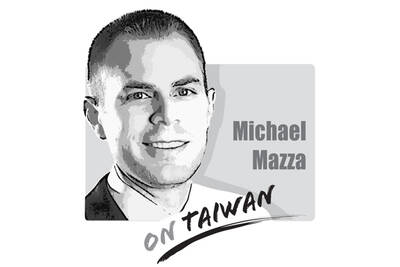In response to a shortage of cybersecurity talent, the government is promoting its “Cybersecurity is National Security 2.0” strategy, while the legislature is expected to soon approve bills to pave the way for a digital development ministry and a “cybersecurity center of excellence.”
These agencies would be important, but Taiwan’s cybersecurity problems are caused by not having the right people working in the right positions and the government not working closely with top universities.
It is instructive to recall how Taiwan developed its semiconductor and IC industries, and how these policies became the blueprint for later initiatives.
In 1973, then-premier Sun Yun-suan (孫運璿) established the Industrial Technology Research Institute. He was advised by then-minister of economic affairs Lee Kuo-ting (李國鼎), as well as a group of scientific and technological consultants, and recruited then-General Instrument Inc chief operating officer Morris Chang (張忠謀) and top academics from overseas.
They brought new technologies and professional management to Taiwan, and innovated the foundry model. National Chiao Tung University (NCTU) and National Tsing Hua University (NTHU) also helped complete the industry’s ecosystem.
These developments set the stage for Taiwan’s dominance in the semiconductor industry.
Former president Chen Shui-bian (陳水扁) promoted the National Science and Technology Program for SoC Project, which was proposed by former NCTU president Chang Chun-yen (張俊彥), to recruit foreign talent.
The project was funded by the Ministry of Science and Technology and Ministry of Education, which were also involved in the placement of recruited workers. Under the project, some of Taiwan’s top universities, such as National Taiwan University, National Cheng Kung University, NTHU and NCTU, compiled new IC design textbooks and facilitated the establishment of new wafer fabs.
These policies helped shape Taiwan’s IC industry, which ranks second worldwide in terms of production value.
The policies were successful because the government invited world-class professionals to lead the development, and the public and private sectors worked together without self-interest getting in the way, which allowed teachers and students at Taiwan’s top universities to be put to good use.
Apart from the strong hacking capabilities of countries such as Russia, North Korea and China, 300 of the world’s top 500 cybersecurity companies are in the US, followed by more than 30 in Israel. Both countries provide scholarships to top students at local universities, seeking to meet their nations’ cybersecurity needs.
In contrast, Taiwan’s information security industry has failed to take off over the past 15 years.
The government should explore the underlying reasons for this, including by examining whether cybersecurity decisionmakers who allocate the resources are competent professionals.
Do they allocate resources only to members of their inner circles? Are sufficient teaching and research resources provided to the four top universities’ cybersecurity research institutes? Are there visionary and respected leaders with appropriate expertise involved in the preparation for and promotion of the planned cybersecurity center of excellence?
Taiwan has the potential to nurture a world-class cybersecurity industry, but the development depends on whether the top management puts the right people in the right positions, and provides sufficient resources for capable teachers and students.
Jang Show-ling is an adjunct professor in National Taiwan University’s economics department.
Translated by Lin Lee-kai

Taiwan has lost Trump. Or so a former State Department official and lobbyist would have us believe. Writing for online outlet Domino Theory in an article titled “How Taiwan lost Trump,” Christian Whiton provides a litany of reasons that the William Lai (賴清德) and Donald Trump administrations have supposedly fallen out — and it’s all Lai’s fault. Although many of Whiton’s claims are misleading or ill-informed, the article is helpfully, if unintentionally, revealing of a key aspect of the MAGA worldview. Whiton complains of the ruling Democratic Progressive Party’s “inability to understand and relate to the New Right in America.” Many
US lobbyist Christian Whiton has published an update to his article, “How Taiwan Lost Trump,” discussed on the editorial page on Sunday. His new article, titled “What Taiwan Should Do” refers to the three articles published in the Taipei Times, saying that none had offered a solution to the problems he identified. That is fair. The articles pushed back on points Whiton made that were felt partisan, misdirected or uninformed; in this response, he offers solutions of his own. While many are on point and he would find no disagreement here, the nuances of the political and historical complexities in
Taiwan is to hold a referendum on Saturday next week to decide whether the Ma-anshan Nuclear Power Plant, which was shut down in May after 40 years of service, should restart operations for as long as another 20 years. The referendum was proposed by the opposition Taiwan People’s Party (TPP) and passed in the legislature with support from the opposition Chinese Nationalist Party (KMT). Its question reads: “Do you agree that the Ma-anshan Nuclear Power Plant should continue operations upon approval by the competent authority and confirmation that there are no safety concerns?” Supporters of the proposal argue that nuclear power
The Centers for Disease Control and Prevention (CDC) earlier this month raised its travel alert for China’s Guangdong Province to Level 2 “Alert,” advising travelers to take enhanced precautions amid a chikungunya outbreak in the region. More than 8,000 cases have been reported in the province since June. Chikungunya is caused by the chikungunya virus and transmitted to humans through bites from infected mosquitoes, most commonly Aedes aegypti and Aedes albopictus. These species thrive in warm, humid climates and are also major vectors for dengue, Zika and yellow fever. The disease is characterized by high fever and severe, often incapacitating joint pain.